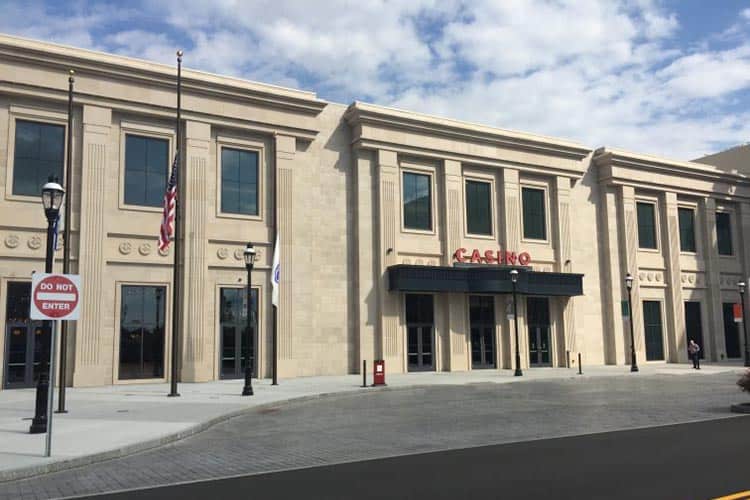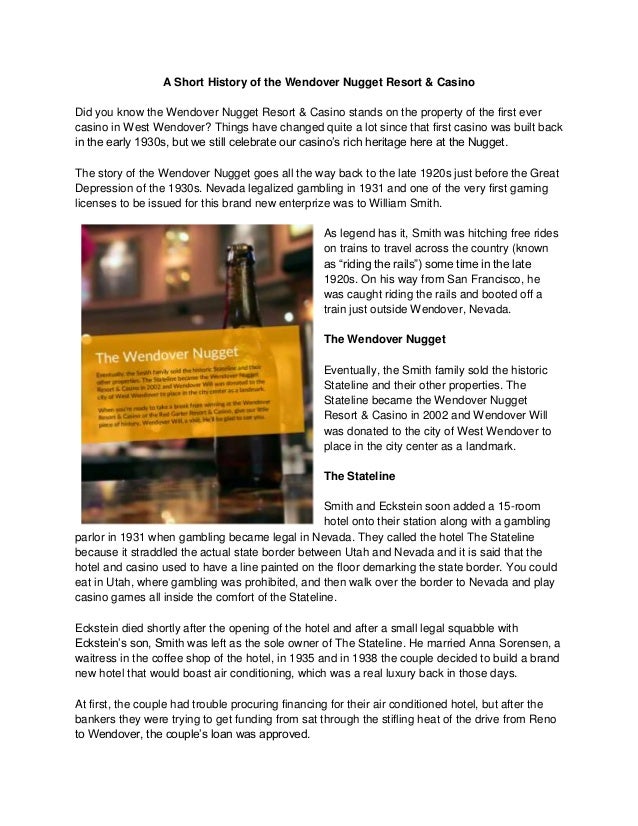First Casino Built In Nevada
The Flamingo is the oldest casino on the Vegas Strip. It first opened in 1946 and has undergone many changes over the past 70(!) years. There have been rumors floating around that another major makeover will begin by the end of the year.
- El Rancho Vegas: The Las Vegas Strip is a stretch of South Las Vegas Boulevard that is known for its concentration of hotels and casinos. The first casino built on the Las Vegas Strip was the El Rancho Vegas, opening on this day in 1941, with 63 rooms. That casino stood for almost 20 years before being destroyed by a fire in 1960.
- When was the first casino built in nevada?
- He built El Rancho, the first hotel casino in the city. It was built in the area that came to be known as the Vegas Strip. Tommy Hull’s success brought many other business men to Las Vegas and many hotel casinos were built. The most famous of which, the Flamingo, was built by the famous mobster Bugsy Seigel.
Nevada's First Casino
Surprisingly, the first of Nevada's great casinos was not in Vegas at all but in its northern counterpart, Reno, the 'biggest little city in the world.' This casino was Harolds Club.
The year was 1937. Gambling was still a product of the Wild West. Casinos were dark, honky-tonk places, their floors covered with sawdust and misses at the spittoon. Fistfights were not uncommon and gunfights were not unknown. The clientele was unsavory and all of it was male, not exactly a spot with much out-of-town draw, and certainly no place for the ladies. Raymond Smith, founder and one might say 'inventor' of Harolds Club, changed all this. Within the first year of his management he successfully face-lifted his establishment into the twentieth century, modernizing its facilities, lighting up its façade at night, installing plate-glass windows out front so that people could look in and see that this casino at least was not the devil's den. Mr. Smith, an ex-carnival barker and a man with a taste for the shocking, then raised more eyebrows by not only allowing women into his gaming emporium, but inviting them, and, at the same time, hiring them as dealers, a deed equally impious in this macho community.
This was just the start. Advertising was Mr. Smith's forte. He started by running a roulette game with a mouse as the ball and numbered mouse-holes for the wheel. Next came fireworks displays, float parades through the center of town, bonanza releases of helium balloons, tattooed with club's insignia. More than twenty million club matches were printed. Seven hundred and fifty one-armed bandits were installed, more than one-fifteenth of all the slot machines in Nevada. The dimensions of the casino itself were expanded, with a Wild West museum built to house Smith's collection of western memorabilia, and five saloons constructed nearby, one of them boasting a giant bourbon waterfall that flowed day and night behind the bar.

Of all the stunts ever launched by the industrious Mr. Smith, however, his 'piece de resistance' was the coast-to-coast billboard blitz. Why confine one's reputation to local gentry, the wily promoter asked. Why not implant our moniker in the minds of every living American, the Connecticut Yankee and the Southern Belle, as well as the western dude? After all, four out of five of the five thousand people a day who visit Harolds Club are out-of-towners. Why not take advantage of this fact? By the time World War II had come and gone there was a chain of more than four thousand signs stretching from Miami to Fairbanks, each depicting a covered wagon full of grotesquely drawn pioneers, one of whom calls out to the spectator that for him it is 'Harolds Club or Bust.' To this day, several teams of construction engineers are kept busy across the country erecting these incredible contributions to Pop culture. And what's more, they work. Since 1946 Harolds Club has been the most successful and the most highly patronized casino in the world.

The first integrated hotel-casino in Las Vegas, the Moulin Rouge, opened on May 24, 1955 in West Las Vegas, the city’s segregated area. The casino was owned by whites and intended to compete with whites-only resorts on the Strip and downtown. The casino did not do as well as expected in the beginning because some Blacks resented the idea of a segregated casino.
However, big name entertainers such as Sammy Davis, Jr., Pearl Bailey, and Louis Armstrong performed and frequented the casino. Numerous white entertainers often joined them after their shows to gamble and perform. The Moulin Rouge also provided employment for local African American entertainers, most notably as hosts and chorus girls.
The Moulin Rouge closed its doors after only six months of operation. It fell victim to its location, which was away from other resorts and local overbuilding.
The Riviera, Dunes, New Frontier, and Royal Nevada all opened that year and ran into financial trouble as well. But that was not the end for the Moulin Rouge. It opened and closed several times and exchanged through hands of a series of owners, most notably Sarann Knight-Preddy, the first African American woman to hold a Nevada gaming license.


The Moulin Rouge also was the site of the meeting in 1960 that led to an agreement between civil rights leaders and casino owners to allow African Americans to gamble at Strip and downtown properties—a step that also reduced the Moulin Rouge’s clientele.
sources: